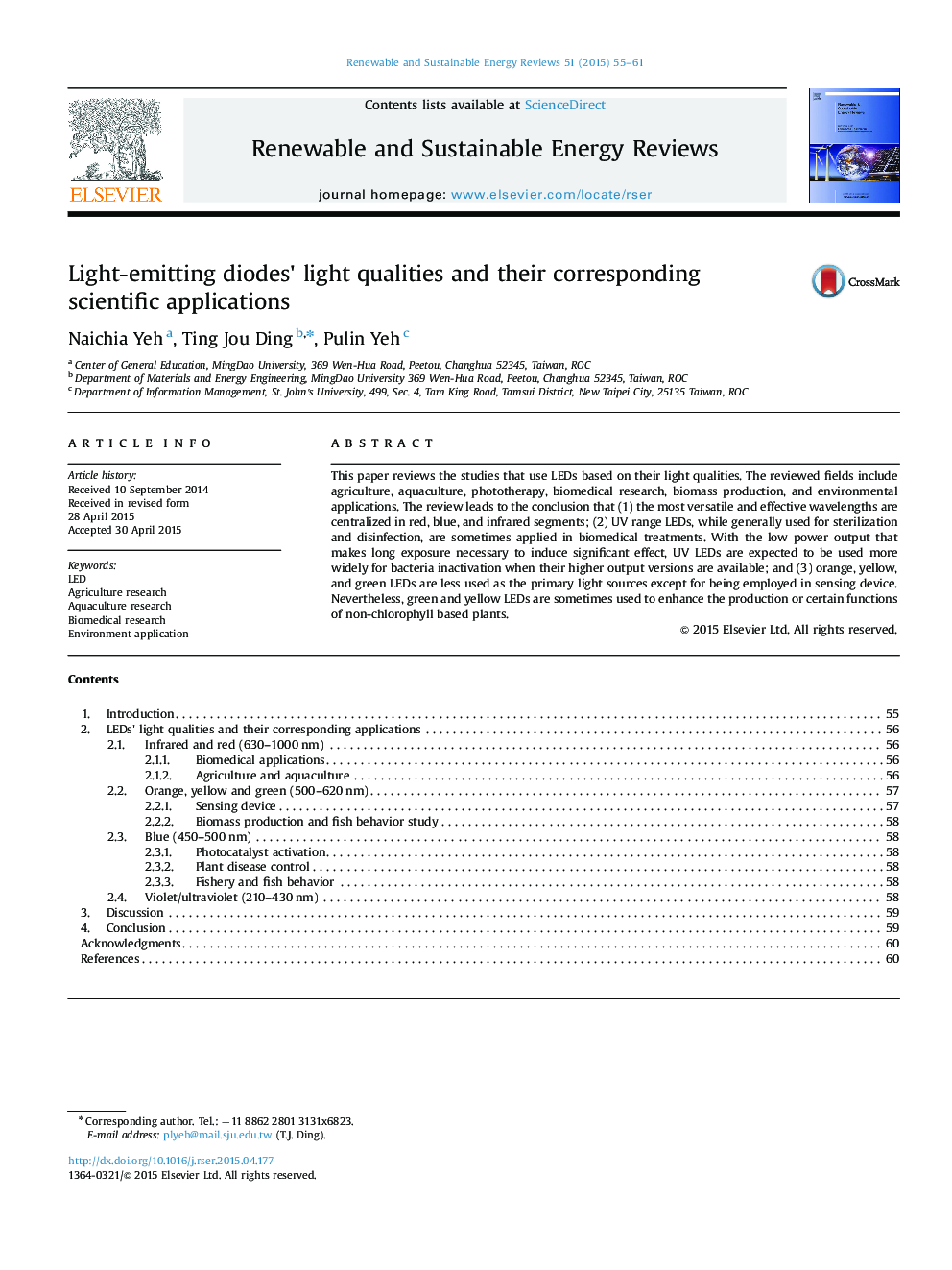| Article ID | Journal | Published Year | Pages | File Type |
|---|---|---|---|---|
| 8115634 | Renewable and Sustainable Energy Reviews | 2015 | 7 Pages |
Abstract
This paper reviews the studies that use LEDs based on their light qualities. The reviewed fields include agriculture, aquaculture, phototherapy, biomedical research, biomass production, and environmental applications. The review leads to the conclusion that (1) the most versatile and effective wavelengths are centralized in red, blue, and infrared segments; (2) UV range LEDs, while generally used for sterilization and disinfection, are sometimes applied in biomedical treatments. With the low power output that makes long exposure necessary to induce significant effect, UV LEDs are expected to be used more widely for bacteria inactivation when their higher output versions are available; and (3) orange, yellow, and green LEDs are less used as the primary light sources except for being employed in sensing device. Nevertheless, green and yellow LEDs are sometimes used to enhance the production or certain functions of non-chlorophyll based plants.
Keywords
Related Topics
Physical Sciences and Engineering
Energy
Renewable Energy, Sustainability and the Environment
Authors
Naichia Yeh, Ting Jou Ding, Pulin Yeh,
